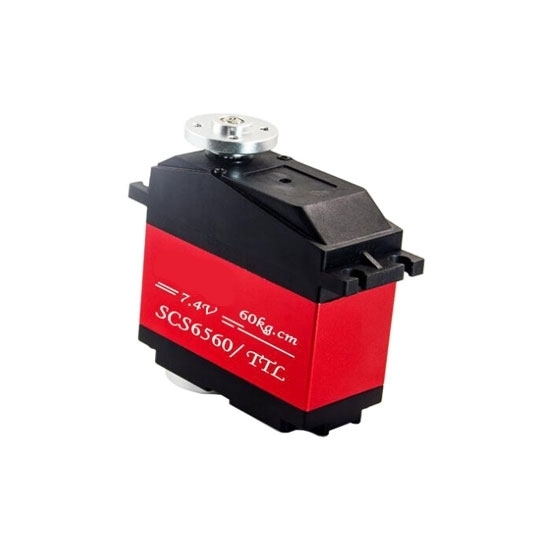
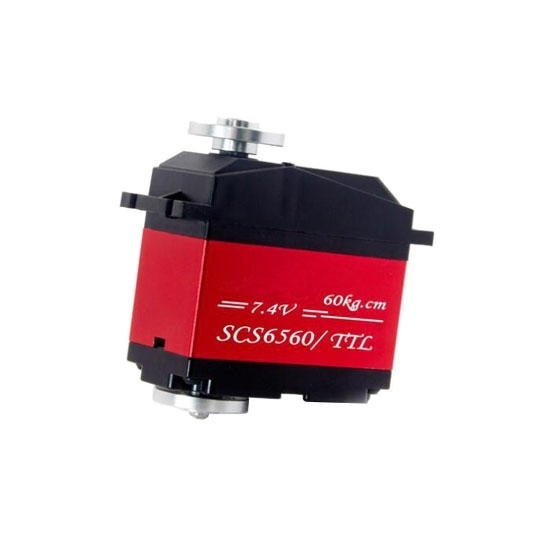
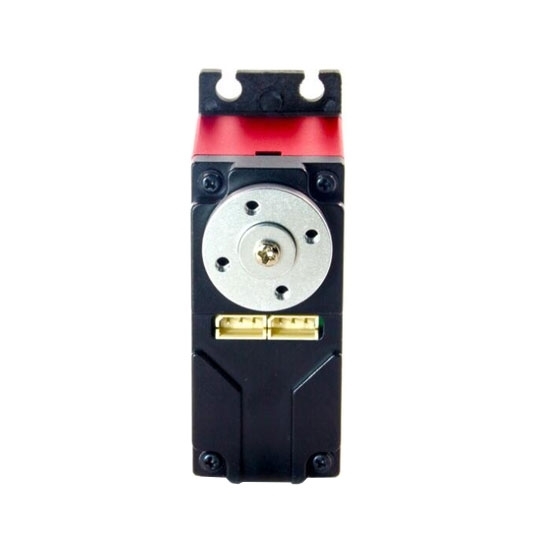
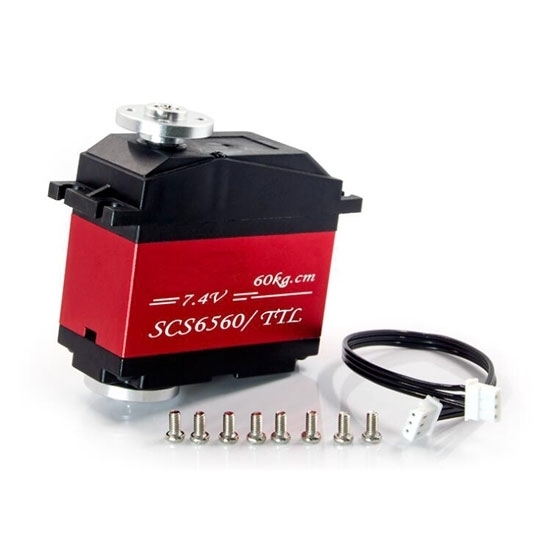
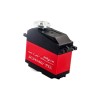
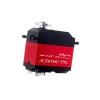
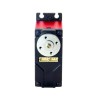
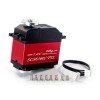
60 Kg·cm (6 Nm) RC Servo Motor, 6V/ 7.4V
from
$299.99
Ex Tax: $299.99
- Stock: In Stock
- Model: RDDLZ-SERVO-RC60
- Weight: 1.00
- SKU: RDDLZ-SERVO-RC60
Available Options
Create unlimited custom product blocks and display them in accordions or tabs or open blocks. Each block can be assigned to all products at once or specific products according to advanced criteria.
Create unlimited custom product blocks and display them in accordions or tabs or open blocks. Each block can be assigned to all products at once or specific products according to advanced criteria.
Economical price 60 kg·cm (6 Nm) RC servo motor is a high torque and precision-controlled actuator commonly used in remote-controlled vehicles, robotics, and automation systems. This remote control servo motor is suitable for applications that require substantial force for rotating or steering mechanisms.
Features
- The micro remote control servo motor has a full aluminum alloy shell with good thermal conductivity, CNC processing is simpler and more precise, and the anodized shell further improves the corrosion resistance of aluminum.
- The radio control servo uses a full aluminum shell to effectively improve the comprehensive mechanical properties. Thickened full steel teeth, higher strength, and longer life.
- The digital RC servo motor uses a hollow cup as the power source, no iron core, small rotor inductance, good responsiveness, high efficiency, small size, and easy to obtain large torque.
Specification
| Model | RDDLZ-SCS-6560 | ||
| Electrical Specification | Operating Voltage | 6V | 7.4V |
| Idle Current (at Stopped) | 5mA | 6mA | |
| No Load Speed | 0.15sec/60° | 0.13sec/60° | |
| Running Current (No Load) | 190mA | 250mA | |
| Stall Torque | 48 kg·cm (4.7 Nm) | 62 kg·cm (6 Nm) | |
| 666.56oz. in | 861oz. in | ||
| Stall Current | 2400mA | 2900A | |
| Mechanical Specification | Size | 65.8*30*59.75mm | |
| Limit Angle | No Limit | ||
| Case Material | Engineering Plastic & Aluminum | ||
| Gear Material | Metal Gear | ||
| Bearing Type | 2 Ball Bearings | ||
| Connector Wire | 150mm ± 5mm | ||
| Weight | 200g | ||
| Horn Type | 15T, Plastic, POM | ||
| Motor | Core Motor | ||
| Storage Temperature Range | -30℃ ~ 80℃ | ||
| Operating Temperature Range | -15℃ ~ 70℃ | ||
| Temperature Range | 25℃ ± 5 ℃ | ||
| Humidity Range | 65% ± 10% | ||
| Control Specification | Command Signal | Bus Packet Communication TTL Level | |
| Amplifier Type | Half Duplex Asynchronous Serial Communication | ||
| Pulse Width Range | 0-253 | ||
| Neutral Position | 338400bps ~ 1 Mbps | ||
| Running Degree | 300° (when 0 ~ 1023) | ||
| Dead Band Width | Load, Speed, Input Voltage | ||
| Rotating Direction | Potentiometer (300° / 1024) | ||
Dimensions (Unit: mm)
Details
Tips: Difference between digital RC servo motor and analog RC servo motor
- Different methods of processing the input signal. Digital micro RC servo motor is mainly composed of a motor, a reduction gear, a control circuit, etc., and it can be maintained at a certain position by sending a PWM signal only once. The analog radio control servo motor is the same as the traditional RC servo motor. It needs to send PWM signals multiple times to be able to keep it at the specified position, realize the control of the steering gear, and rotate according to the specified speed.
- Different control circuit. The control circuit of the digital RC servo motor has more microprocessors and crystal oscillators than the analog remote control servo motor, therefore, the processing methods of the control circuit are different between the two, and the performance of the digital RC servo motor is also different from that of the analog RC servo motor.
- Different reaction speed. The analog RC servo motor needs a short power pulse followed by a long pause, so it cannot give the motor too much excitation to make it rotate. Digital RC servo motor is a steering gear that appeared in the new era, so digital has an advantage over analog RC servo motors in terms of response speed. Because the digital RC servo motor has a microprocessor, all can process the input signal according to the set parameters before the power pulse is generated to the motor.
Builder in Product TAB
NEW! Since Journal 3.2, the much improved T.A.B (Tabs Accordion Blocks) system supports the page builder inside the tab content. Unlimited Blocks, Tabs or Accordions with any HTML content or the builder interface (supporting custom rows/columns/modules) can be assigned to any individual product or to certain groups of products, like entire categories, brands, products with specific options, attributes, price range, etc.
You can indicate any criteria via the advanced product assignment mechanism and only those products matching your criteria will display the modules.
Also, any module can be selectively activated per device (desktop/tablet/phone), customer login status and other criteria. Imagine the possibilities.
